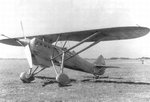- Thread starter
- #201
The Short S.14 Sarafand was a British biplane flying boat built by Short Brothers. It was planned as a general reconnaissance aircraft for military service. When it was built in 1932 it was the largest aircraft that had been built in the United Kingdom. The Sarafand was first proposed by Oswald Short in 1928 as an enlarged development of the Singapore II, to provide transatlantic range capabilitity. Short managed to persuade first his chief designer Arthur Gouge and then the Chief of the Air Staff, Sir Hugh Trenchard (later Viscount Trenchard) of the feasibility of such a large aircraft and Air Ministry specification R.6/28 was drawn up to define the project. It was conducted as a public/private joint venture, the Air Ministry funding it with £60,000 and Short Brothers providing the rest. The aircraft was originally designated the Short R6/28 before being named the Sarafand.
The Sarafand was a six-engined biplane flying boat with equal span wings. Due to the high wing end loads, Gouge specified corrugated steel spars for both upper and lower wings. The six engines, in tractor/pusher pairs, were housed in monocoque nacelles mounted between the wings on integral girders; the central nacelle was further supported by two pairs of splayed struts to the lower wing-roots. The hull, largely constructed of anodised Alclad, had a stainless-steel planing bottom. It had a monoplane tail unit with one large fin and two small auxiliary fins on the tailplane.
Source: Short Sarafand - Wikipedia, the free encyclopedia
The Sarafand was a six-engined biplane flying boat with equal span wings. Due to the high wing end loads, Gouge specified corrugated steel spars for both upper and lower wings. The six engines, in tractor/pusher pairs, were housed in monocoque nacelles mounted between the wings on integral girders; the central nacelle was further supported by two pairs of splayed struts to the lower wing-roots. The hull, largely constructed of anodised Alclad, had a stainless-steel planing bottom. It had a monoplane tail unit with one large fin and two small auxiliary fins on the tailplane.
Source: Short Sarafand - Wikipedia, the free encyclopedia
Attachments
Last edited:








































